The nation’s war dead have been commemorated by the King as the country fell silent in remembrance of the servicemen and women who paid the ultimate sacrifice.
Charles laid the first wreath at the Cenotaph in recognition of the fallen from conflicts dating back to the First World War, and other floral tributes followed from members of the royal family, Sir Keir Starmer, other political leaders and foreign diplomats.
The solemn ceremony was held after a two-minute silence was observed in the heart of Whitehall and at war memorials in villages, towns and cities across the country.
Watching from a Government building balcony overlooking the Cenotaph was the Princess of Wales, making a rare public appearance this weekend to attend events marking Armistice Day.
Kate joined Charles and the Prince of Wales at the Royal British Legion’s Festival of Remembrance at the Royal Albert Hall on Saturday evening but missing from the events was the Queen, who is recovering from a chest infection.
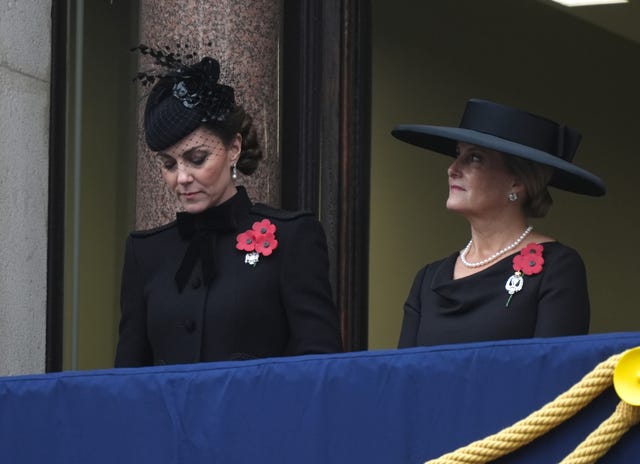
Among the crowds lining barriers on Whitehall were military veterans proudly wearing their medals, while others waited nearby to take part in the Royal British Legion march past the memorial.
A volley from a gun fired by the King’s Troop Royal Horse Artillery from nearby Horse Guards Parade rang out to signal the start of the two minutes of silent reflection, punctuated by the sound of London traffic, and another booming blast marked its end.
The King laid his wreath on behalf of the nation, after buglers from the Royal Marines played the Last Post. Charles was followed in doing so by the Prince of Wales, the Duke of Edinburgh, the Princess Royal, with the Queen’s equerry Major Ollie Plunket laying her wreath.
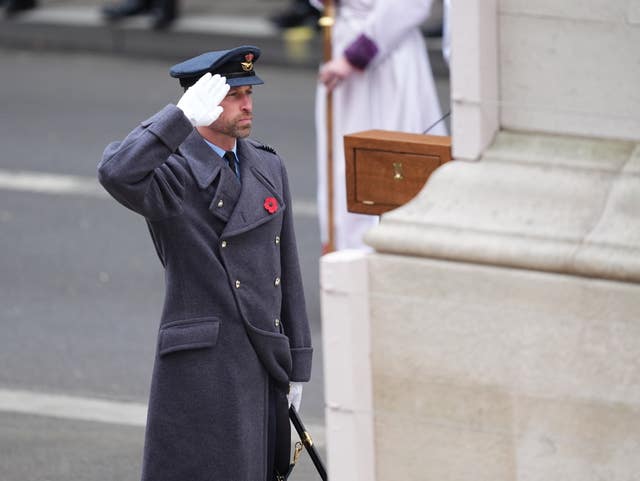
Charles wore military dress, as did the other royals, and after laying his wreath he saluted in his greatcoat worn over his uniform of an Admiral of the fleet, with a sword by his side.
His wreath closely resembled a floral tribute produced for his grandfather King George VI – 41 open-style poppy petals made from bonded fabric mounted on black leaves, traditional for a sovereign’s wreath and featuring a tied ribbon in the colours of the King’s racing silk – scarlet, purple and gold.
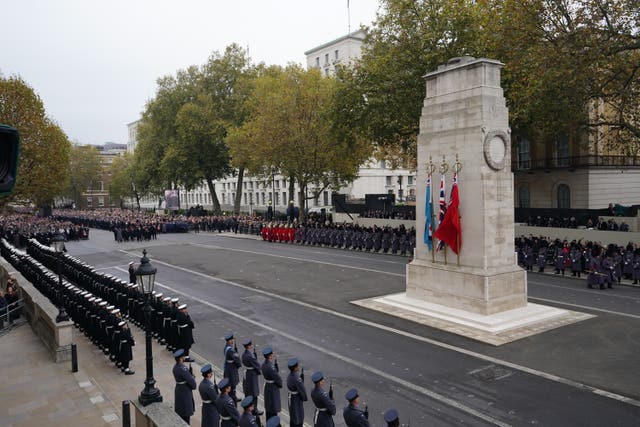
Prime Minister Sir Keir stepped forward to pay tribute to the fallen on behalf of the Government with his floral tribute, as did the Conservative Party’s new leader Kemi Badenoch, other party leaders, senior members of the Cabinet, military chiefs of staff and high commissioners.
Standing close to the Cenotaph were an unprecedented eight former prime ministers: Sir John Major, Sir Tony Blair, Gordon Brown, Lord Cameron, Baroness May, Boris Johnson, Liz Truss and Rishi Sunak.
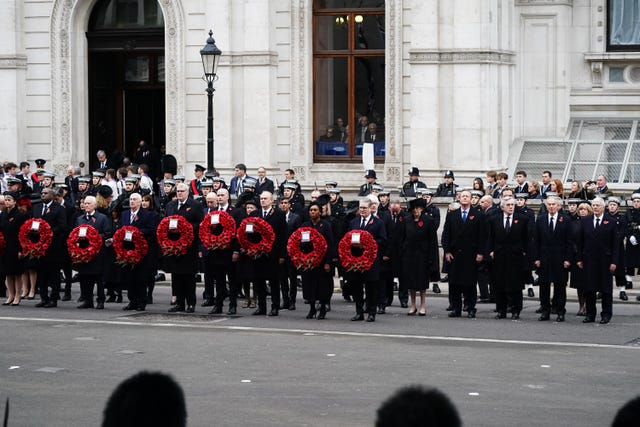
Watching from the Foreign, Commonwealth & Development Office building were Kate standing with the Duchess of Edinburgh, in a neighbouring balcony was Vice Admiral Sir Tim Laurence with the Duke of Kent, and the Duke and Duchess of Gloucester stood together in another.
A short service followed the laying of the main wreaths, with Bishop of London Dame Sarah Mullally delivering a prayer.
She told those gathered: “O Almighty God, grant, we beseech thee, that we who here do honour to the memory of those who have died in the service of their country and of the Crown, may be so inspired by the spirit of their love and fortitude that, forgetting all selfish and unworthy motives, we may liv only to thy glory and to the service of mankind through Jesus Christ our Lord.”
Kate listened intently as the ceremony progressed and could be seen exchanging words with Sophie.
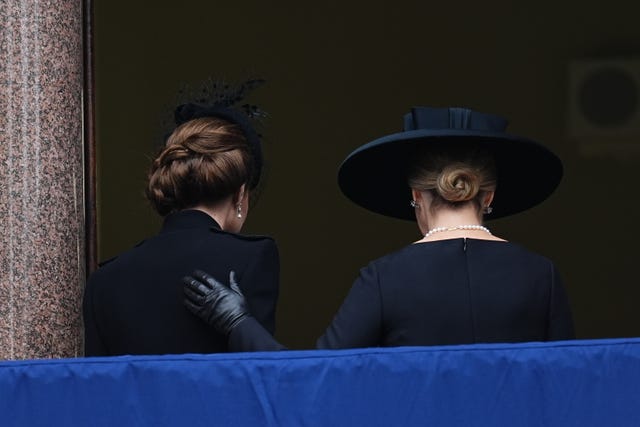
Whitehall was filled with thousands of spectators who watched the detail of the event on large screens.
As the ceremony drew to a close, Sophie was photographed putting her hand gently on Kate’s back as the pair left the balcony.
The princess has recently completed a course of chemotherapy and is making a slow return to royal duties after being diagnosed with cancer.





Why are you making commenting on The Herald only available to subscribers?
It should have been a safe space for informed debate, somewhere for readers to discuss issues around the biggest stories of the day, but all too often the below the line comments on most websites have become bogged down by off-topic discussions and abuse.
heraldscotland.com is tackling this problem by allowing only subscribers to comment.
We are doing this to improve the experience for our loyal readers and we believe it will reduce the ability of trolls and troublemakers, who occasionally find their way onto our site, to abuse our journalists and readers. We also hope it will help the comments section fulfil its promise as a part of Scotland's conversation with itself.
We are lucky at The Herald. We are read by an informed, educated readership who can add their knowledge and insights to our stories.
That is invaluable.
We are making the subscriber-only change to support our valued readers, who tell us they don't want the site cluttered up with irrelevant comments, untruths and abuse.
In the past, the journalist’s job was to collect and distribute information to the audience. Technology means that readers can shape a discussion. We look forward to hearing from you on heraldscotland.com
Comments & Moderation
Readers’ comments: You are personally liable for the content of any comments you upload to this website, so please act responsibly. We do not pre-moderate or monitor readers’ comments appearing on our websites, but we do post-moderate in response to complaints we receive or otherwise when a potential problem comes to our attention. You can make a complaint by using the ‘report this post’ link . We may then apply our discretion under the user terms to amend or delete comments.
Post moderation is undertaken full-time 9am-6pm on weekdays, and on a part-time basis outwith those hours.
Read the rules here